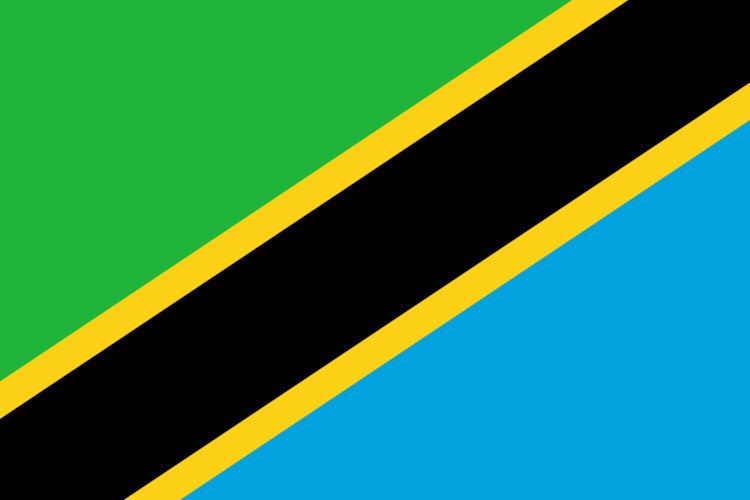Area 945,087 km² Largest city Dar es Salaam | Continent Africa | |
 | ||
Neighboring countries Kenya, Uganda, Mozambique, Rwanda, Zambia, Democratic Republic of the Congo, Malawi, Burundi | ||
Tanzania has a varied geography, including deep and large freshwater and salt lakes, many national parks, and Africa's highest point, Mount Kilimanjaro (5,895 m or 19,341 ft).
Contents
Map of Tanzania
Northeast Tanzania is mountainous and includes Mount Meru, an active volcano, Mount Kilimanjaro, a dormant volcano, and the Usambara and Pare mountain ranges. Kilimanjaro attracts thousands of tourists each year.
West of those mountains is the Gregory Rift, which is the eastern arm of the Great Rift Valley. On the floor of the rift are a number of large salt lakes, including Natron in the north, Manyara in the south, and Eyasi in the southwest. The rift also encompasses the Crater Highlands, which includes the Ngorongoro Conservation Area and the Ngorongoro Crater. Just to the south of Lake Natron is Ol Doinyo Lengai (3,188 m or 10,459 ft), the world's only active volcano to produce natrocarbonatite lava. To the west of the Crater Highlands lies Serengeti National Park, which is famous for its lions, leopards, elephants, rhinoceroses, and buffalo plus the annual migration of millions of white bearded wildebeest. Just to the southeast of the park is Olduvai Gorge, where many of the oldest hominid fossils and artifacts have been found.
Further northwest is Lake Victoria on the Kenya–Uganda–Tanzania border. This is the largest lake in Africa by surface area and is traditionally named as the source of the Nile River. Southwest of this, separating Tanzania from the Democratic Republic of the Congo, is Lake Tanganyika. This lake is estimated to be the second deepest lake in the world after Lake Baikal in Siberia. The western portion of the country between Lakes Victoria, Tanganyika, and Malawi consists of flat land that has been categorised by the World Wildlife Fund as part of the Central Zambezian Miombo woodlands ecoregion. Just upstream from the Kalambo Falls, there is one of the most important archaeological sites in Africa.
The centre of Tanzania is a large plateau, which is part of the East African Plateau. The southern half of this plateau is grassland within the Eastern Miombo woodlands ecoregion, the majority of which is covered by the huge Selous National Park. Further north the plateau is arable land and includes the national capital, Dodoma.
The eastern coast contains Tanzania's largest city and former capital, Dar es Salaam. Just north of this city lies the Zanzibar Archipelago, a semi-autonomous territory of Tanzania which is famous for its spices. The coast is home to areas of East African mangroves, mangrove swamps that are an important habitat for wildlife on land and in the water.
Administratively, Tanzania is divided into 30 regions, with twenty-five on the mainland, three on Unguja (known informally as Zanzibar Island), and two on Pemba Island.
Tanzania has a tropical climate but has regional variations due to topography. In the highlands, temperatures range between 10 and 20 °C (50 and 68 °F) during cold and hot seasons respectively. The rest of the country has temperatures rarely falling lower than 20 °C (68 °F). The hottest period extends between November and February (25–31 °C or 77.0–87.8 °F) while the coldest period occurs between May and August (15–20 °C or 59–68 °F).
Seasonal rainfall is driven mainly by the migration of the Intertropical Convergence Zone. It migrates southwards through Tanzania in October to December, reaching the south of the country in January and February, and returning northwards in March, April, and May. This causes the north and east of Tanzania to experience two distinct wet periods – the short rains (or "Vuli") in October to December and the long rains (or "Masika") from March to May – while the southern, western, and central parts of the country experience one wet season that continues October through to April or May.
The onset of the long rains averages 25 March and the cessation averages 21 May. A warmer-than-normal South Atlantic Ocean coupled with a cooler-than-normal Eastern Indian Ocean often causes the
Fact file
Location: Eastern Africa, bordering the Indian Ocean, between Kenya and Mozambique.
Geographic coordinates: 6°00′S 35°00′E
Map references: Africa
Area:
note: includes the islands of Mafia, Pemba, and Unguja
Land boundaries:
Coastline: 1,424 kilometres (885 mi)
Maritime claims:
Terrain: plains along coast; central plateau; highlands in north, south
Elevation extremes:
Natural resources: hydropower, tin, phosphates, iron ore, coal, diamonds, gemstones, gold, natural gas, nickel
Land use:
Irrigated land: 1,843 square kilometres (712 sq mi) (2003)
Total renewable water resources: 96.27 cubic kilometres (23.10 cu mi) (2011)
Natural hazards:
Environment - current issues: soil degradation; deforestation; desertification; destruction of coral reef threatens marine habitats; recent droughts affected marginal agriculture; wildlife threatened by illegal hunting and trade, especially for ivory
Environment - international agreements:
Specific geographic regions
Extreme points
This is a list of the extreme points of Tanzania, the points that are farther north, south, east or west than any other location.
